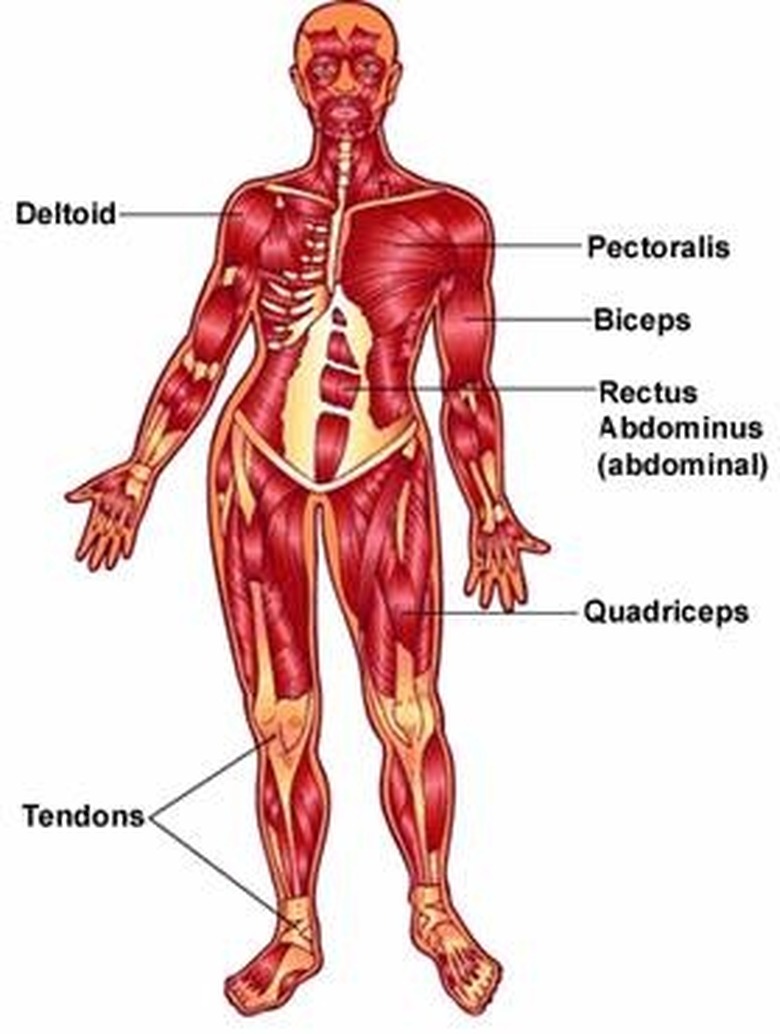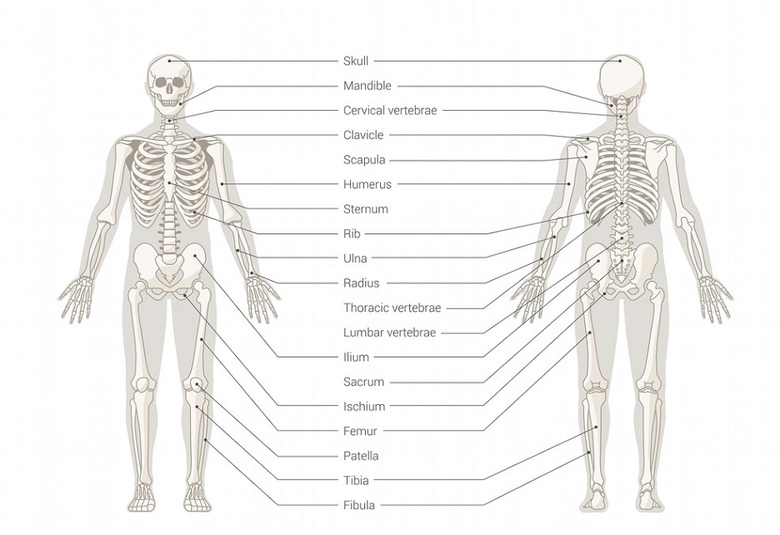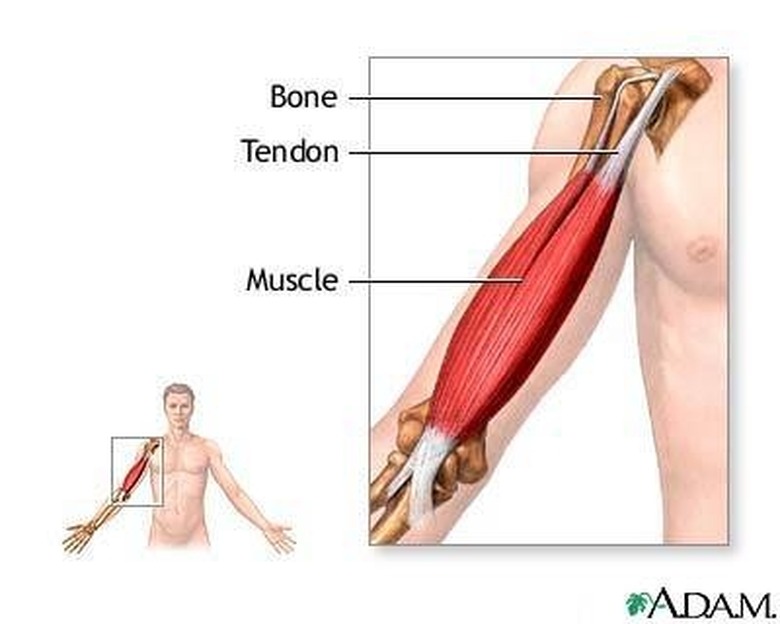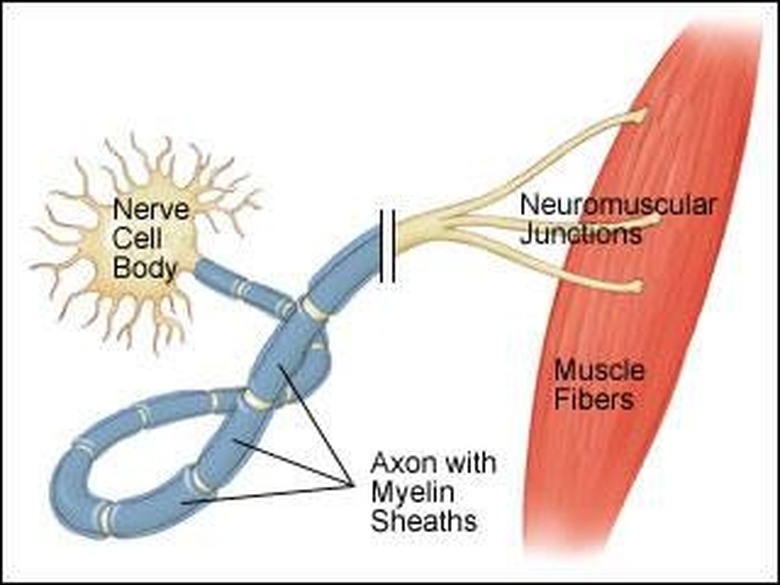What Makes A Skeleton Move?
TL;DR (Too Long; Didn't Read)
A **muscle** is a band of fibrous tissue that has the ability to contract. Muscles are connected to the bones (or pieces of a skeleton) throughout the human body. These connections are called **joints** (e.g., a knee or elbow). Joints are triggered by nerves and allow for bones to bend, or can help them stay in place.
The human skeletal system provides support, protection and shape to the human body. It is composed of bones, cartilage, ligaments and other tissues that each perform different collaborative functions that allow the body to move.
Nerves send signals from the brain to the muscles to contract, which moves the bones, allowing the skeleton to move.
What Is the Skeletal System?
What Is the Skeletal System?
An adult skeleton (the primary support structure for the human body) has 206 different bones and can be divided into two parts:
1. The axial skeleton – Includes the rib cage, spine and skull. It protects the sense organs (think: tongue, eyes, ears) and other major organs (like the heart and lungs).
2. The appendicular skeleton – Includes the bones found in the arms, legs and shoulders, hips. 126 out of the 206 bones in the body make up the appendicular skeleton.
Muscles connect to the bones to allow them to bend. This is called a musculoskeletal connection, or joint.
What Is a Musculoskeletal Connection?
What Is a Musculoskeletal Connection?
A musculoskeletal connection, or a **joint**, is where muscles and bones intersect.
Joints give the body the ability to take shape (like standing upright) and move (like walking). Joints can be large (like the knee or elbow) or small (like knuckles found in fingers).
How Do Muscles Work?
How Do Muscles Work?
Skeletal muscles work by voluntarily contracting to make bones move or to help maintain their existing position.
For example, to raise an arm over the head, a muscle must contract at the shoulder joint to pull the arm bones up over the head. The muscle stays contracted as long as the arm is being held above the head and helps to hold that position.
Skeletal muscle is composed of long, thin, multinucleated (having more than one nucleus) fibers. The skeletal muscle fibers are linked to each other with connective tissue. Connective tissue is that holds together and supports muscles, bones, and other components of the body. It communicates with nerves and blood vessels to create a muscle contraction.
Each skeletal muscle fiber contains myofibrils that contain actin and myosin filaments. Actin is a protein that forms (together with myosin) the protein filaments of skeletal muscles and is involved in muscle contraction.
When actin and myosin fibers overlap, a **muscle contraction** occurs. A common method of understanding muscle contractions is the Sliding Filament Theory (see the "Resources" section of this article for more information).
What Are Tendons and Ligaments?
What Are Tendons and Ligaments?
Ligaments and tendons work together along with muscles to allow bones to bend or stay in place. They also help prevent joints from moving too far (hyper- or hypo-extending).
Tendons and ligaments provide extra support in addition to muscles to help make the skeleton strong and sturdy, while still allowing for flexibility.
- Tendons are strong and flexible, but not elastic, tissues that attach muscles to bones.
- Ligaments are tough and flexible connective tissues that connect bones to other bones.
How Do Nerves Help Muscles Move?
How Do Nerves Help Muscles Move?
An impulse is sent from the nervous system to a the musculoskeletal system through neuromuscular junctions.
A neuromuscular junction is a synapse, or an electrical connection, formed where a nerve cell and a muscle fiber intersect. The neuromuscular junction allows for an electrical or chemical signal to be passed from the nerve to the muscle, signaling actin and myosin to overlap, and causing muscle contraction.
For example, when a person decides to stand up, the brain sends a signal through the nerves to the muscle. When the "stand up" signal reaches the neuromuscular junction, the muscle contracts and pulls on the leg and hip bones, allowing the body to stand upright.
Cite This Article
MLA
Toms, Jacklyn. "What Makes A Skeleton Move?" sciencing.com, https://www.sciencing.com/what-makes-skeleton-move-4574566/. 18 June 2019.
APA
Toms, Jacklyn. (2019, June 18). What Makes A Skeleton Move?. sciencing.com. Retrieved from https://www.sciencing.com/what-makes-skeleton-move-4574566/
Chicago
Toms, Jacklyn. What Makes A Skeleton Move? last modified March 24, 2022. https://www.sciencing.com/what-makes-skeleton-move-4574566/



